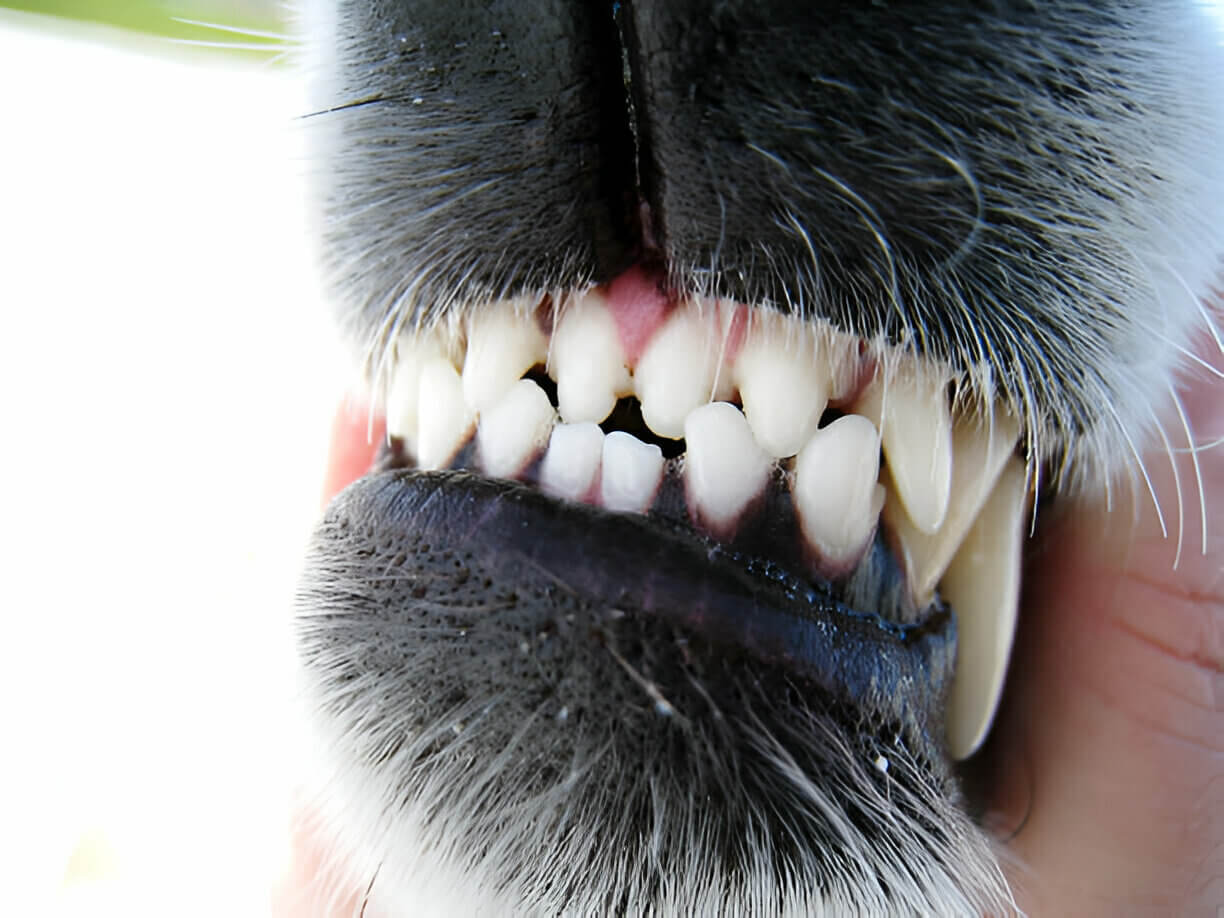When a dog shows their teeth, it can be a concerning behavior for pet owners. Understanding the reasons behind this behavior and learning how to respond appropriately can help create a safer and more harmonious relationship with your dog. This guide explores the various reasons why dogs show their teeth and provides effective strategies to address this behavior.

Understanding Dog Behavior
What Does It Mean When a Dog Shows Their Teeth?
Dogs show their teeth for a variety of reasons, and it’s crucial to interpret the context and accompanying body language to understand their intentions. Here are some common reasons why dogs show their teeth:
- Aggression: A dog may bare their teeth as a warning sign to back off. This is often accompanied by other aggressive signals like growling, a stiff body, and direct eye contact.
- Fear or Anxiety: A fearful dog might show their teeth as a defensive mechanism. This often occurs when a dog feels threatened or cornered.
- Playfulness: During play, some dogs show their teeth as part of their playful behavior. This is usually accompanied by a relaxed body, wagging tail, and playful gestures.
- Submission: A submissive grin, where a dog shows their teeth while displaying other submissive behaviors like a lowered body posture or averted gaze, indicates an attempt to appease and show deference.
- Pain or Discomfort: Dogs may show their teeth if they are in pain or discomfort. This is a way to signal distress and ask for space.
Recognizing the Signs
Aggressive Signals
Aggressive teeth-baring is typically a warning. It is often accompanied by:
- Growling or snarling.
- A stiff and rigid body posture.
- Erect ears and intense, direct eye contact.
- Tail held high and moving slowly or rigidly.
Understanding these signs is crucial for ensuring safety and managing the behavior effectively. When you see these signals, it’s important to take a step back and give the dog space to avoid escalating the situation.
Fearful or Anxious Signals
When a dog is scared or anxious, they may show their teeth along with:
- Tucked tail.
- Ears flattened against the head.
- Whale eye (showing the whites of their eyes).
- Cowering or retreating behavior.
Fearful dogs need reassurance and a calm environment to feel secure. Avoid approaching a fearful dog directly and give them time to relax.
Playful Signals
Playful teeth-baring usually involves:
- A wagging tail.
- A loose, relaxed body posture.
- Play bow (front end lowered, rear end up).
- Happy, excited expressions.
Recognizing playful behavior helps ensure positive interactions and prevents misinterpretation of harmless actions.
Submissive Grins
A submissive grin includes:
- Showing front teeth in a relaxed manner.
- Ears pulled back.
- Averted gaze or squinty eyes.
- Low tail wagging and a wriggling body.
Submissive grins are often seen during greetings and indicate a dog’s friendly and non-threatening intentions. This behavior is generally harmless and can be a sign of affection and respect.
Responding to a Dog Showing Teeth
Safety First
When a dog shows their teeth, prioritize safety:
- Maintain a safe distance if the dog appears aggressive or fearful.
- Avoid direct eye contact and sudden movements.
- Speak in a calm, soothing voice to avoid escalating the situation.
- If the dog is on a leash, ensure the owner has control and can manage the dog.
Safety is paramount when dealing with a dog showing teeth. Always assess the situation carefully and avoid actions that could provoke the dog further.
Calming Techniques
To calm a dog showing their teeth:
- Avoid confrontation and give the dog space.
- Use treats or toys to distract and redirect their focus.
- For fearful dogs, create a safe and quiet environment to help them feel secure.
Calming techniques should focus on reducing the dog’s stress and anxiety. Positive reinforcement and a calm demeanor are essential.
Managing and Preventing Aggression
Training Tips
- Socialization: Early socialization helps dogs feel comfortable around various people, animals, and environments, reducing the likelihood of aggressive behavior.
- Positive Reinforcement: Reward good behavior with treats, praise, and playtime. Avoid punishment, as it can increase fear and aggression.
- Consistency: Establish clear rules and boundaries. Consistent training helps dogs understand expectations and reduces confusion.
- Exercise: Provide ample physical and mental stimulation. A tired dog is less likely to exhibit aggressive behaviors.
Training should be an ongoing process that reinforces good behavior and addresses issues consistently. Regular training sessions and positive reinforcement are key components of successful behavior management.
Seeking Professional Help
If your dog’s aggressive behavior is severe or you’re unsure how to manage it, seek help from a professional dog trainer or behaviorist. Signs that it’s time to consult a professional include:
- Your dog has bitten someone or another animal.
- Aggressive behavior persists despite training efforts.
- You feel unsafe handling your dog.
Professional guidance can provide tailored strategies and support to address complex behavior issues effectively.
Conclusion
Understanding why your dog shows their teeth and responding appropriately can significantly improve your relationship and ensure a safer environment. By recognizing the signs, applying calming techniques, and seeking professional help if needed, you can manage and prevent aggressive behaviors effectively. With patience and consistency, you can help your dog feel more secure and reduce the instances of teeth-baring.




